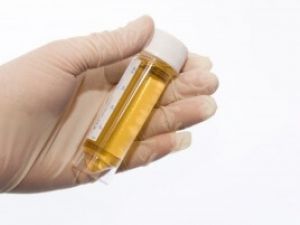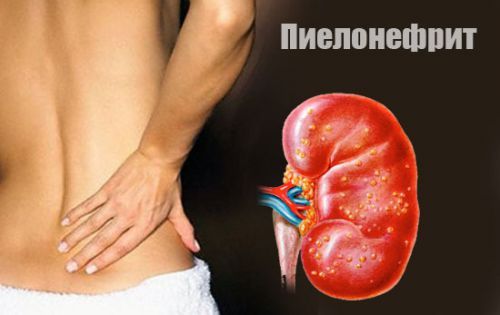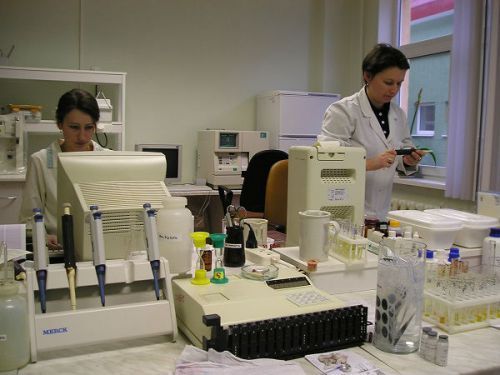Urine tests characterize the work of the kidneys, their ability to filter or delay certain substances. Indirectly it is possible to judge the state of the cardiovascular, endocrine system, the severity of the patient.
A separate line in the form of present analysis, indicators such as the osmolarity of the urine. This concentration in a liter of different solutes. Do not confuse it with weight.
To change influence present in the urine, bacteria, protein, leukocytes. Totally clean urine sample can be compared in terms of osmolarity and specific gravity.
What is
Osmosis is a one – way movement of fluid through a semipermeable membrane that separates two solutions with different concentrations of the substances. Water moves to the side with a high content of dissolved substances.
Osmotically active in the human body are sodium ions and chloride, glucose, proteins, urea, bicarbonate. They are able to actively attract water. If we talk about the concentration of the substance in 1 liter of urine, it osmolality. When it comes to the number per 1 kg of a liquid is the osmolality. They are measured in mOsm/l mOsm/kg, respectively.

Uses the concept of osmotic Windows are the difference between the results of measurements and theoretical calculations. For the last indicator it is necessary to determine the concentration of active substances.
Methods of determining
For analysis using special devices – osmometry.
Their work is based on certain laws of physics.
- The pressure of steam. The device requires a minimum amount of urine, as measured by Microlitre. But they provide the greatest margin of error. The action is based on lowering the vapor pressure of the solvent above the solution. Often used in pediatric practice for newborns.
- The increase in the boiling point (the higher the osmolarity, the later boil the solution). The apparatus of this type is not widely spread in medicine, are used for non-biological liquids.
- The lowering of the freezing point (the higher the osmolarity, the longer the freeze). Cryoscopic osmometry the most prevalent.
- Membrane osmometry flow of the investigated liquid through an artificial or natural membrane and in this moment performs the necessary measurements. To analyze a more commonly used blood.
In preparation for the examination
The day before the study you need to eat right. Some people recommend 12 hours before putting the urine to drink. On the result of analysis may affect some medicines (dextrose), before x-ray examination with contrast suspension.
It is very important receive urine without bacteria. To do this, women and men to wash their genitals. Women are advised to cover the vagina with a cotton swab. A few drops of urine released into the bowl, then insert a sterile jar to collect the rest.
Explanation indicators
Normal figures are considered to be 800-1200 mOsm/L.
Changes can be the following:
- 600-800 mOsm/l primary renal dysfunction;
- 400-600 mOsm/l, a moderate decrease in kidney function;
- at least 400 mOsm/l – a significant violation.

A hyperosmolar state can be caused by:
- dehydration;
- congestive heart failure;
- the glucosuria;
- stenosis of the renal artery;
- shock.
Pyelonephritis is a condition in which there is gipoosmolarnosti urine
Gipoosmolarnosti occurs when:
- the excess fluid;
- kidney failure;
- pyelonephritis;
- necrosis of the renal tubules.
Sometimes gipoosmolarnosti is a symptom of diabetes insipidus.
When the analysis is justified
Indicative determination of osmolarity in cases of suspected renal failure. The concentration of urea and creatinine changed only when the affected more than 50% of the nephrons.
This occurs 3-4 days decrease in the production of urine (oligouria). For early diagnosis of acute renal failure is unreliable. Therefore, the osmolarity of urine 400-350 mOsm/l precedes the development of acute renal failure.
It is recommended to carry out research in hypertension, diabetes, to assess the treatment of hyperosmolar kom, the effectiveness of infusion therapy, diagnosis of intracranial hypertension.
The types of violations of water-salt balance
A day, an average person drinks 2 liters of water. Part of it comes with drink and another with food. A certain amount is formed after decomposition of various substances. Most of the liquid excreted in the urine, another part – with the feces, and the rest with the steam of their lungs, or by evaporation from the skin. The water balance must be equal to 0, the amount received is still highlighted.

If it is shifted in the positive direction, then there is gipergidratace (water retention, edema, increased pressure). A negative balance is observed during dehydration.
Swelling of the lower extremities – manifestation of violation of water-salt balance in the body
There are the following violations of the ratio of fluid and salts:
- Gipostaticeski gipergidratace. The body practically does not do of salt, but in excess water. Is a “water poisoning” – edema cells, their functions are violated. Clinically is manifested edema of various location – ascites, pulmonary edema, hydrothorax.
- The hyperosmolar gipergidratace observed in the intake of large amounts of fluid and electrolytes. This condition can occur if you drink sea water. Electrolytes cause dehydration of the cells, they die. A person feels an irresistible craving.
- Hypo dehydration develops when large losses of fluid and electrolytes filling its volume with plain water. This is possible after severe vomiting, diarrhea, heavy sweating, in diabetes. When this occurs the blood clots, which can cause thrombosis.
- Hyperosmolar dehydration – fluid loss is not accompanied by a decrease in electrolytes. The condition develops during prolonged dry fasting without drinking water, large exercise, hyperventilation of the lungs, abuse of diuretics, which remove mainly water without salts.
Pathology of water-salt balance leads to disruption of metabolism in General, may cause serious consequences.




Hey there would you mind letting me know which web host you’re working with? I’ve loaded your blog in 3 different web browsers and I must say this blog loads a lot faster then most. Can you recommend a good internet hosting provider at a reasonable price? Cheers, I appreciate it!